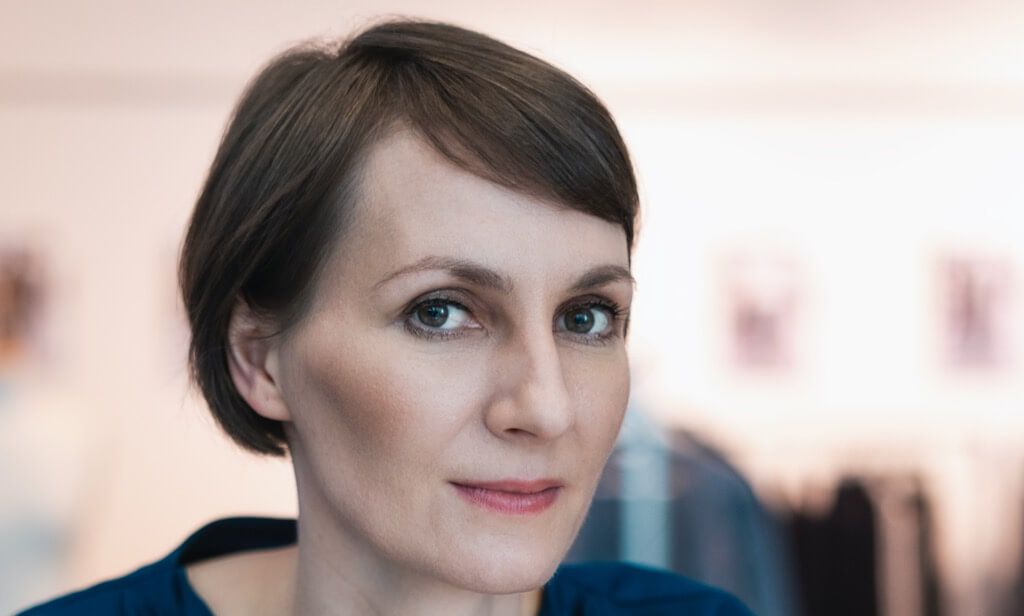The Berlin based fashion label BRACHMANN, co-founded by fashion designer Jennifer Brachmann and Olaf Kranz, has a clear and distinctive language. Tom from Superior Magazine talked to Jennifer Brachmann how everything started, about the label’s characteristics and who wears BRACHMANN.

Jennifer, you are the co-founder and the designer of the fashion label BRACHMANN. Before we talk about your label could you please tell us a bit about your professional background?
I graduated with a diploma in fashion design from the renowned Burg Giebichenstein University of Art and Design in Halle/Saale in 2010 after previously studying architecture at the Technical University in Dresden. So, I have the privilege to hold diplomas in two design subjects, one in architecture and one in fashion design. During both studies, I was initiated into the design principles of the Bauhaus, which remain a formative influence on my design work.
As an undergraduate fashion student, I won the competition “Weltgewänder” in 2006 which was juried by Stephan Schneider (Antwerp), Alfons Kaiser (FAZ), and Patricia Riekel (former Chief Editor Bunte, Amica, InStyle). During my fashion studies I interned with Veronique Branquinho in Antwerp.
Right after my fashion design studies, I started as a freelancer, and did quite a lot of projects like designing capsule collections for other labels, working for private clients on customer specific projects, or working in costume design for films and theatre productions. However, I never stopped to work on my own designs.
After a few years as a freelancer, I developed the idea to start a label based on those designs that in turn relied on the design concept that I had developed for my diploma thesis. Thanks to a grant from an art foundation in 2013 I started with the label BRACHMANN and showed my first collection at the Mercedes-Benz Fashion Week Berlin in January 2014.
You mentioned Bauhaus. How does this movement influence your creations? Is that characteristic for your fashion?
Absolutely. The Bauhaus movement has been deeply ingrained in the design curricula at both universities I studied. Both universities taught in the Bauhaus tradition. So, I guess, Bauhaus is part of my design DNA, and I can’t nothing do about it but designing inspired by the Bauhaus principles. But this does not mean that I try to copy them like when one prints just old iconic Bauhaus prints on fabrics. Then I would just be in the souvenir business dealing with ornaments and failing the Bauhaus idea grotesquely.
I would rather like to modernize the Bauhaus language in fashion. So, I call my approach playful minimalism to stress that it is about newness and playfulness rather than strict accuracy and maximal reduction. Though, I rather share the Bauhaus’ quest for universal and timeless aesthetic forms which is really a challenge in fashion, because this would mean the idea of eternal classics.
Very interesting. Are there other inspirations as well? How does the creative process behind your collections look like?
There are many inspirations, of course. For example, some seasons ago an inspiration source was a picture that striked me as extraordinarily beautiful. It was a picture of the Johnson Wax Headquarters building designed by Frank Lloyd Wright, so I used its architecture and interieur as inspiration.
However, another important inspiration is always to translate design principles from architecture into fashion. I start with deconstructing classical staples into their basic modules which I reconstruct and recombine in novels ways. When I use those principles I always come up with new ideas for different cuts, details, silhouettes and hybrids.
When I attend fabric fairs, for example in Milano, Paris or Munich, I also draw inspiration from new fabrics, qualities, haptics, and colours.
And not to forget are my own designs and my own signature style. So, I often work forward from my own designs and develop them even further and evolve them.
How important are sustainable aspects for you?
Very important, it is essential. People should buy clothes less often but more consciously looking for favourite pieces that last. For BRACHMANN, sustainability starts with the quest for timeless design or rather for a design that has more relevance than just a season or a short-lived trend. When the clothes stay aesthetically relevant for the person who wears them for a long time, you can also add quality of manufacturing and fabrics what we try to do.
Hence, craftsmanship is very important for us, too. We only source fabrics made from natural fibres that are produced in the EU according to the strict environmental protection EU laws, and we only work with manufacturers from the Berlin region who we personally know in order to make sure that working conditions are ok. One of the advantages of working with regional suppliers is that you have short distances not only for transport but also for communication and quality checking and resolving problems.
BRACHMANN started as a menswear label. Now you also added womenswear? How did that come? Did that change your whole label?
In a sense, it was a natural evolution. Since my design approach is about deconstructing classics, one reason for starting with menswear was that one can find here many staples which have been there unchanged since ages so that I could demonstrate how powerful my approach is in coming up with newness based on classics. However, soon I realized that I can become even more playful in my designs when I apply my approach to womenswear classics or when I create womenswear inspired by my own menswear designs, particularly in fabrics and colour.
However, while the intention to extend my collections to womenswear has been there almost from the start, it needed a certain trigger to actually realize this idea. This trigger came when I performed in the Woolmark Menswear Competition back in 2016 for which I had been nominated by the Fashion Council Germany. While actually performing, the main juror, the British designer Neil Barrett, interrupted me and asked me why I wouldn’t wear my own designs. Beside the obvious answer, that I was a pure menswear designer at this point in time, and beside the point that the all male jury wouldn’t accept a women as a menswear designer this question really bothered me since it felt sort of chauvinist and paternalistic. So, we decided to finally start with womenswear to show within our own collection how our aesthetic vision reflects differently for women and for men. Finally, I can wear my own designs!
Label-wise this decision has increased the complexity since we are dealing with two different fashion systems and calendars for women and men. But thanks to this complexity we can show within our own aesthetic universe how our vision plays out for women and men in different ways respecting gender differences while we follow a unique and cohesive design language in both collections at the same time.
Business-wise, we are still super happy with this decision since it helped us much to enlarge the impact and outreach of our aesthetic vision. Our styles appeal to a much wider and more fashion conscious audience. What is funny, that is, that our collections are not only are attractive for single men or single women but also for couples. So, when a young couple visited our showroom in Berlin recently to buy a wedding suit for the groom the future bride fall in love with one of our dresses and bought it on the spot.
Who is wearing BRACHMANN? Who are your target customers?
The “BRACHMANN man” is refined, bold, and independent in his aesthetic judgement, he likes surprises and respects emancipated women.
Women who wear BRACHMANN are like me. I design for women who are independent, who like who they are, who live ethically conscious, and who share my Jil Sanderish Célinish aesthetic vision.
Thank you for the interview!

